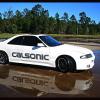Blitz SSBC Boost Controller Setup
Announcements
-
Similar Content
-
Latest Posts
-
and if there is not speedo sensor from car to go there? just cap it off? (its currently using a N/A ER34 GT /S15 style diff which has the speed/abs sensor built in front section of diff)
-
Just do an experiment. Run the tank down to nearly empty. Put 20L of something else in it, with no ethanol. Swish it round with the pump (ie running at idle and/or low load). Then fill it up with the decent stuff and drive sensibly for a half tank then fill it properly. Or suck the crap out and put it in the wife's car. Whatever.
-
Looks like Honda asked AI to draw them a sporty coupe and that's what it came out with. Amazed the side profile can simultaneously look just like Z but also like shit. Glad to see Japanese two door sports cars still have future though...hanging out for that S16 Silvia which Nissan surely have waiting in the wings
-







Recommended Posts
Create an account or sign in to comment
You need to be a member in order to leave a comment
Create an account
Sign up for a new account in our community. It's easy!
Register a new accountSign in
Already have an account? Sign in here.
Sign In Now